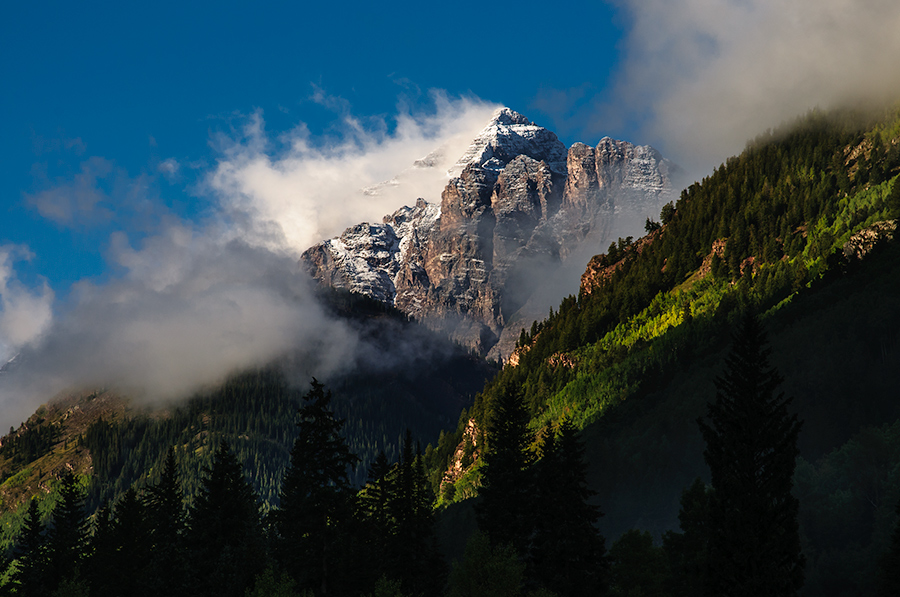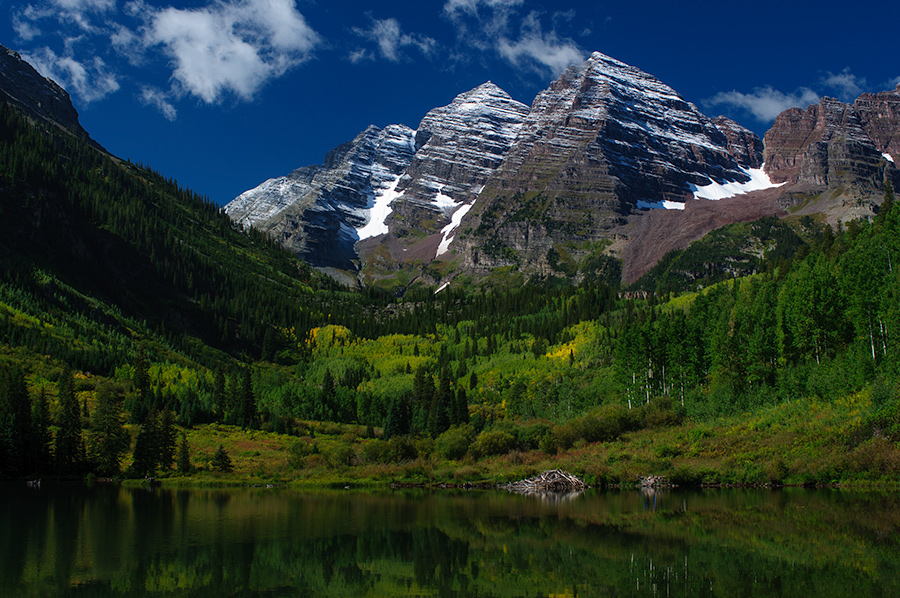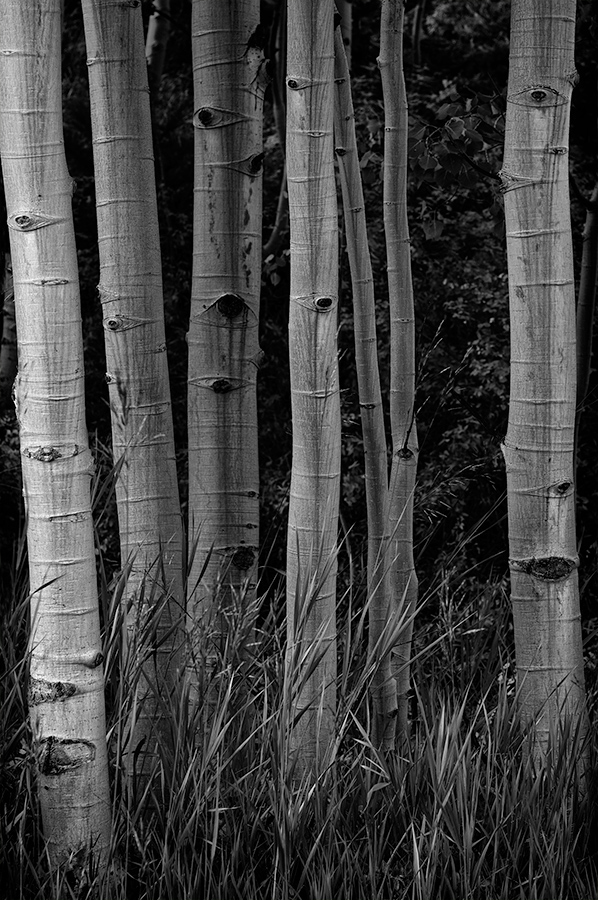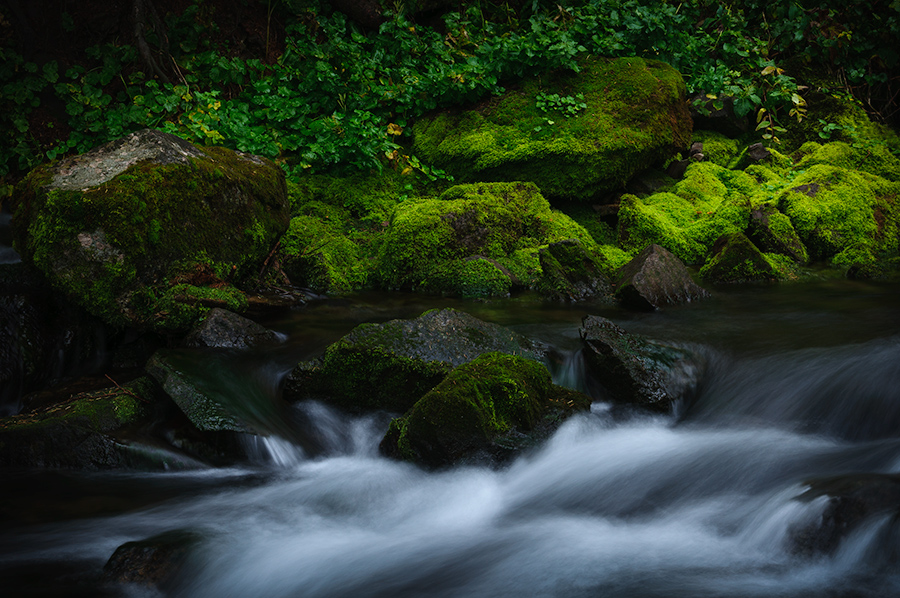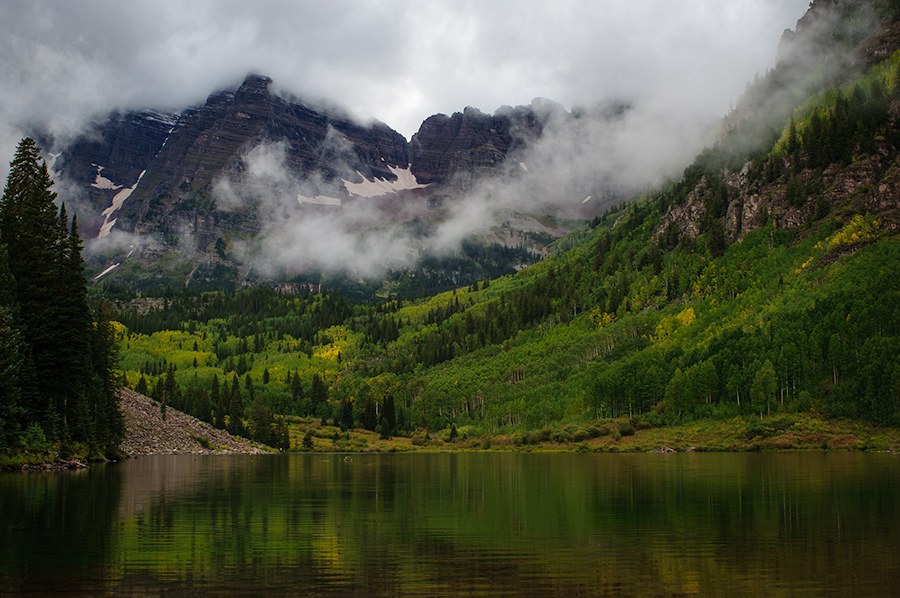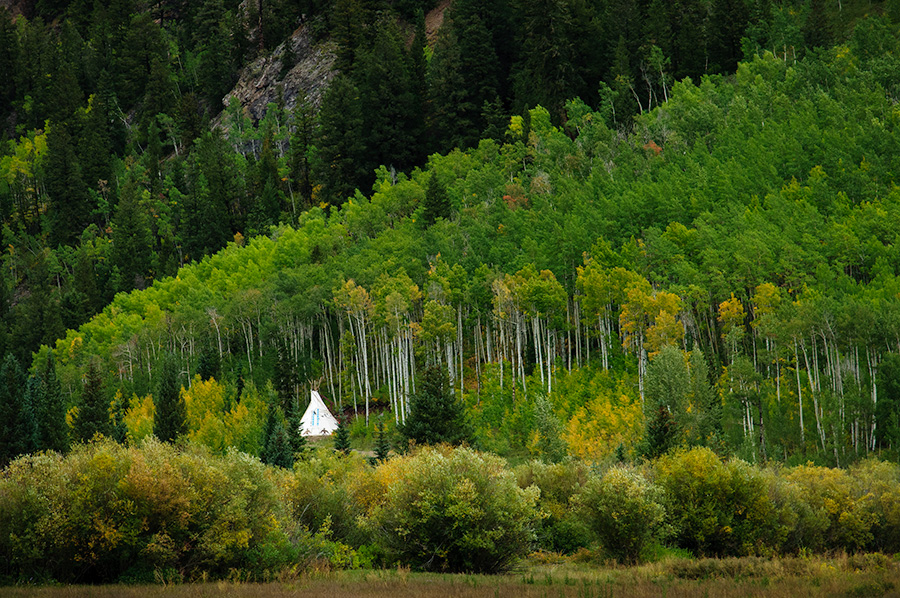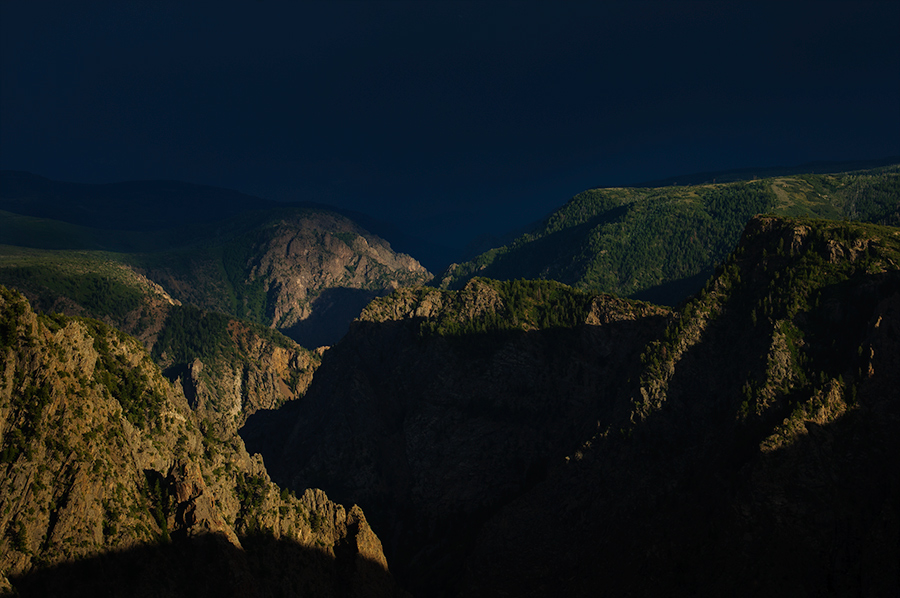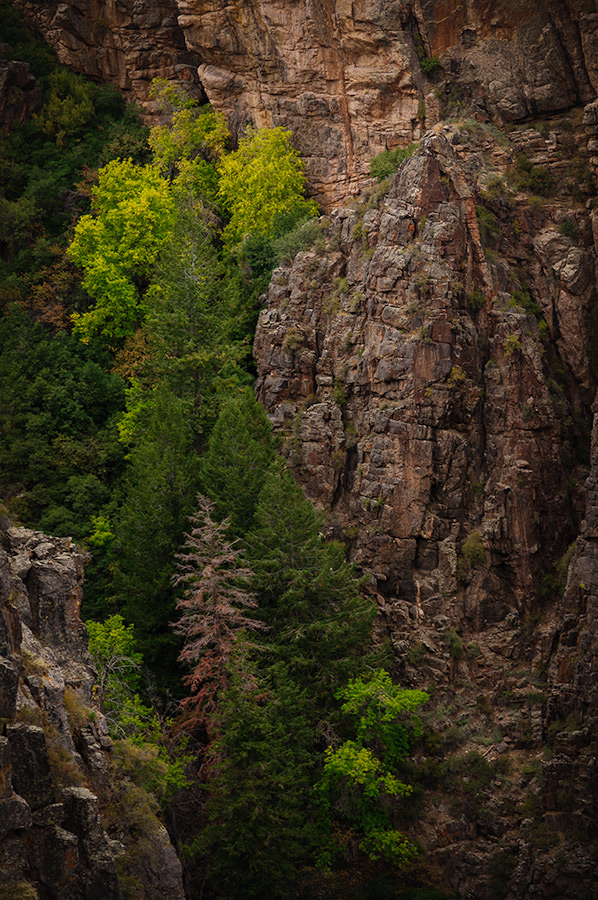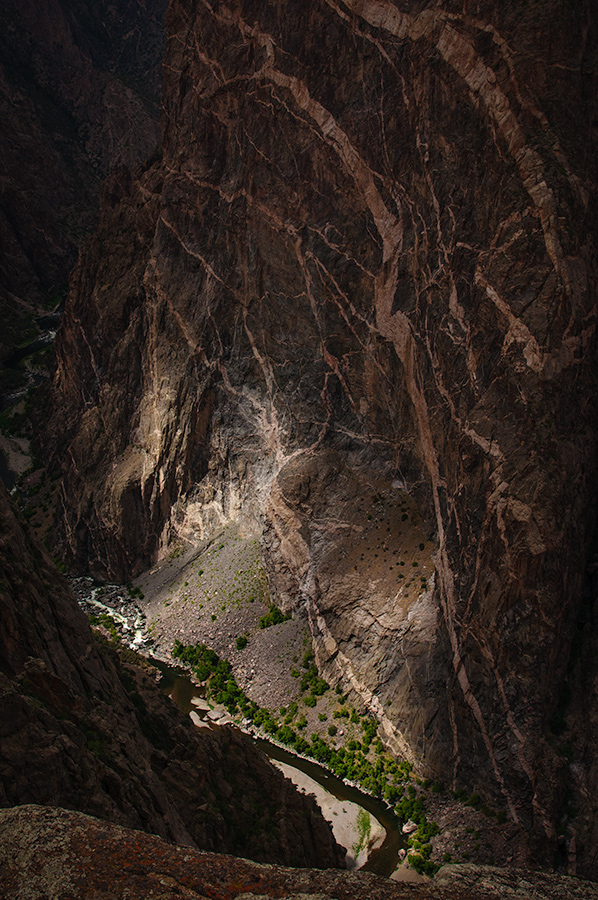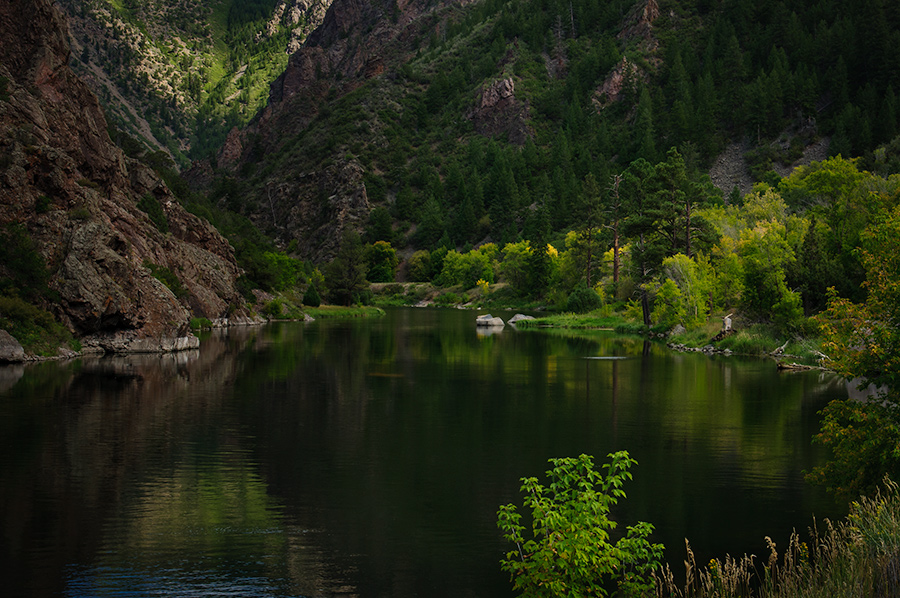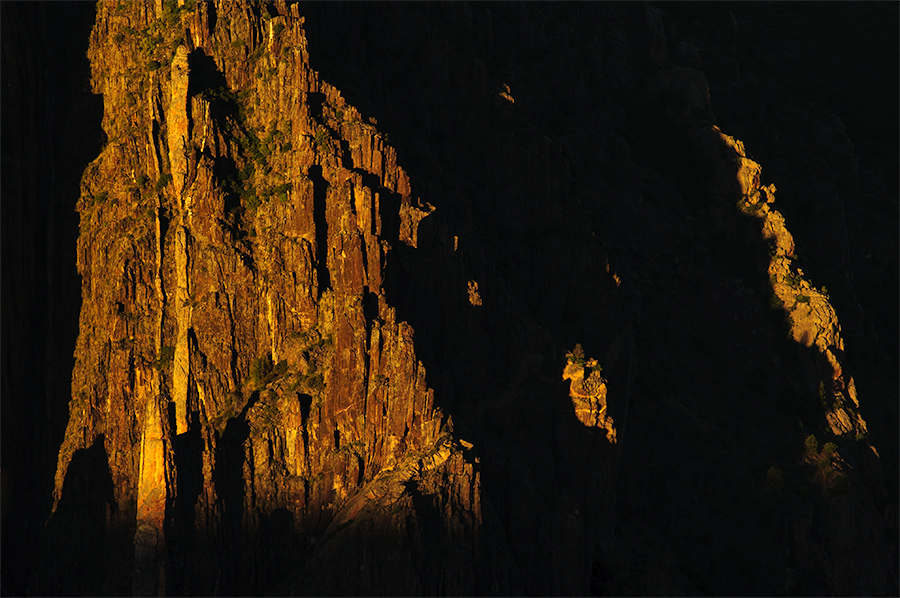
The forecast for the weekend promised warm and dry weather, so we decided to pack the tent, throw the kayaks on top of the car, and go camping in Gov. Dodge State Park over in Wisconsin. The majority of the leaves is on the ground but little patches of yellow, red, and orange are still part of the landscape here in the Midwest.
Saturday morning thick fog covered Twin Lake Valley below the campground and every valley around. Pretty soon the fog lifted and left us with a clear blue sky for the rest of the day and into Sunday morning.

The water is a little chilly already but who says you have to go swimming? Joan and I paddled both days and as you can see our little dog Cooper didn’t mind it either. One of the reasons we like this state park so much is the variety of activities you can enjoy in and around this area. After yesterday’s paddle tour we went on a hike for a few hours and visited some old spring houses, Stevens Falls, and the Stevens homestead, the old farm of this pioneering family. Their life is described and documented on interpretive signs along a trail. Why do I mention this? Some of the photographs displayed on signs were made by a family member way back in the old days. Although none of the farm buildings exists anymore, except for the foundations, the photos of the old farm give us today, over 100 years later, a pretty good impression how this farm has grown and supported the life of this family. Photography at work! ;-)

Bare trees are hardly photogenic but if the light hits them just right, you can still make a photo that may have an impact on the viewer and tells the story about autumn. I tried this minutes before sunset and from the same location, a rocky bluff above the valley, as during the fog in the morning. The white stems of the trees stand out and even if the eye goes to the long shadows of the shrubs in the foreground for a few seconds, it will go back to the sunlit bare trees.
